Hardening of the artery walls. Arteriosclerosis and Atherosclerosis: Causes, Symptoms, and Treatments
What are the main causes of arteriosclerosis and atherosclerosis. How do these conditions affect cardiovascular health. What symptoms should you watch out for. What treatment options are available for managing clogged arteries.
Understanding Arteriosclerosis and Atherosclerosis
Arteriosclerosis and atherosclerosis are closely related conditions that affect the arteries, the blood vessels responsible for carrying oxygen-rich blood throughout the body. These conditions involve the hardening and narrowing of arteries, which can lead to serious cardiovascular problems.
Arteriosclerosis is a general term referring to the hardening of arteries, while atherosclerosis specifically describes the buildup of plaque on artery walls. Both conditions can significantly impact blood flow and overall health.
What is arterial plaque?
Arterial plaque is a substance that accumulates on the inner walls of arteries. It consists of various components, including:

- Calcium
- Fat
- Cholesterol
- Cellular waste
- Fibrin (a substance involved in blood clotting)
As plaque builds up, it causes the arteries to narrow and harden, a condition known as atherosclerosis. This process can begin as early as childhood or adolescence, with symptoms typically manifesting in middle age or later.
Risk Factors for Developing Clogged Arteries
Several factors contribute to the development of arteriosclerosis and atherosclerosis. Understanding these risk factors is crucial for prevention and early intervention.
Can high cholesterol levels lead to clogged arteries?
Yes, high levels of “bad” cholesterol, or low-density lipoprotein (LDL), are major contributors to arterial plaque formation. Conversely, “good” cholesterol, or high-density lipoprotein (HDL), helps remove some of the bad cholesterol from plaque and transport it to the liver for elimination.
How does high blood pressure affect artery health?
High blood pressure increases the rate at which arterial plaque builds up and accelerates the hardening of clogged arteries. Managing blood pressure is essential for maintaining healthy arteries.
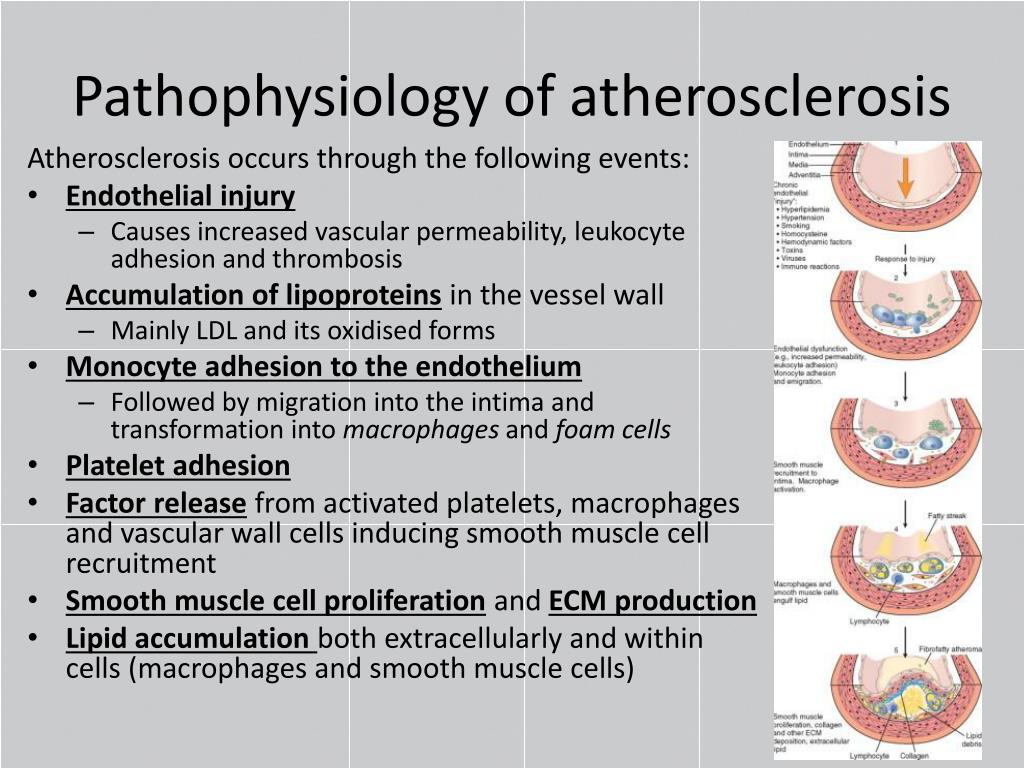
Other significant risk factors include:
- Cigarette smoking
- Diabetes or elevated blood sugar levels
- Family history of cardiovascular disease
- Chronic stress
- Sedentary lifestyle
- Obesity
The Dangers of Clogged Arteries
Clogged arteries pose significant health risks, potentially leading to life-threatening conditions. The location of plaque accumulation determines the specific medical issues that may arise.
What cardiovascular conditions are associated with clogged arteries?
Clogged arteries can lead to several serious cardiovascular conditions:
- Coronary artery disease (CAD): Plaque buildup in arteries supplying blood to the heart can cause chest pain, shortness of breath, and potentially lead to heart attacks.
- Carotid artery disease: Accumulation of plaque in the carotid arteries, which supply blood to the brain, increases the risk of stroke.
- Peripheral artery disease (PAD): Plaque in blood vessels carrying blood to the legs can result in reduced oxygen delivery, causing pain, numbness, or serious infections in the lower extremities.
Recognizing the Symptoms of Clogged Arteries
In many cases, clogged arteries may not cause noticeable symptoms until a major event, such as a heart attack or stroke, occurs. However, when arteries are significantly blocked (70% or more), certain symptoms may manifest.
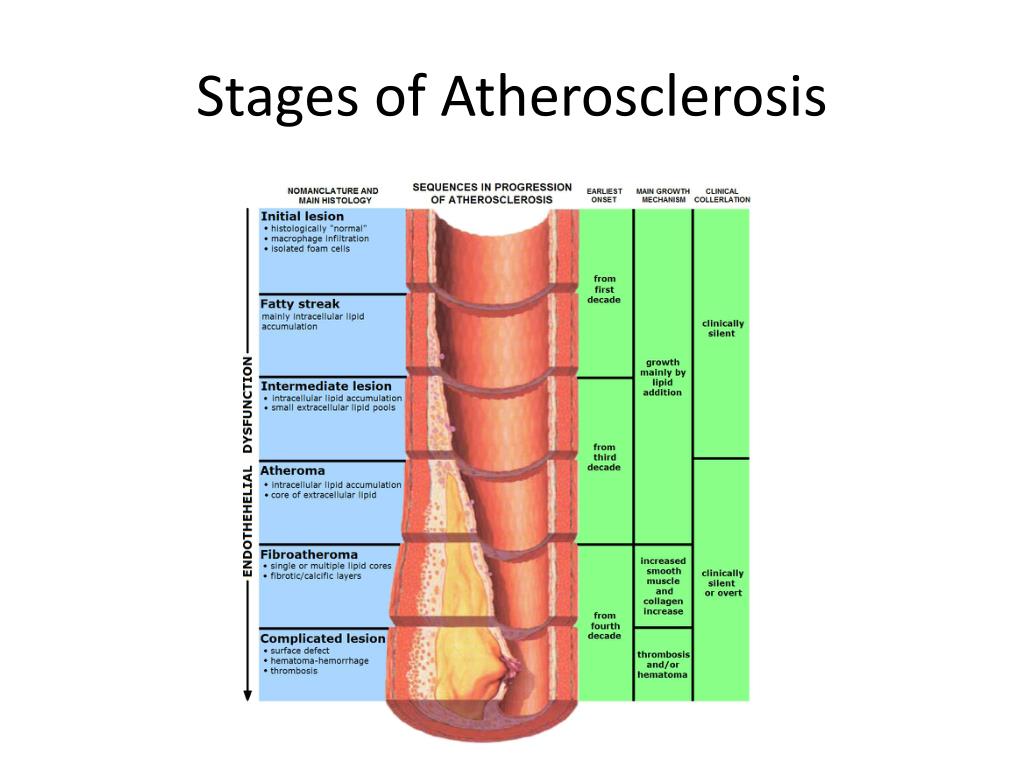
What are the common symptoms of clogged arteries?
Common symptoms of clogged arteries include:
- Chest pain (angina)
- Shortness of breath
- Heart palpitations
- Weakness or dizziness
- Nausea
- Sweating
Specific symptoms may vary depending on the affected arteries. For instance, carotid artery disease may cause transient ischemic attacks (TIAs) with symptoms such as weakness or numbness on one side of the body, vision loss, or slurred speech.
Diagnostic Tests for Clogged Arteries
Early detection of clogged arteries is crucial for preventing serious complications. Various diagnostic tests can help identify the presence and extent of arterial plaque.
How are clogged arteries diagnosed?
Doctors may use several diagnostic methods to assess arterial health:
- Blood tests: To check cholesterol levels and other markers of cardiovascular risk
- Electrocardiogram (ECG): To evaluate heart rhythm and detect signs of reduced blood flow
- Stress tests: To observe how the heart responds to physical exertion
- Coronary calcium scan: To detect and quantify calcium deposits in the coronary arteries
- Angiography: To visualize blood flow through the arteries using contrast dye and X-ray imaging
- Ultrasound: To examine blood flow and detect plaque buildup in specific arteries
Treatment Approaches for Clogged Arteries
Managing clogged arteries often involves a combination of lifestyle changes and medical interventions. The goal is to slow or reverse plaque buildup and reduce the risk of cardiovascular events.

What lifestyle changes can help manage clogged arteries?
Implementing healthy lifestyle habits is crucial for managing clogged arteries:
- Adopting a heart-healthy diet low in saturated fats and high in fruits, vegetables, and whole grains
- Engaging in regular physical activity
- Quitting smoking
- Maintaining a healthy weight
- Managing stress through relaxation techniques or counseling
What medical treatments are available for clogged arteries?
Medical treatments for clogged arteries may include:
- Medications: Statins to lower cholesterol, antiplatelet drugs to prevent blood clots, and blood pressure medications
- Angioplasty and stenting: Procedures to open blocked arteries and improve blood flow
- Coronary artery bypass grafting (CABG): Surgery to create new pathways for blood flow around blocked arteries
- Endarterectomy: Surgical removal of plaque from arteries, particularly in cases of carotid artery disease
Preventing Arteriosclerosis and Atherosclerosis
Prevention is key in maintaining healthy arteries and reducing the risk of cardiovascular disease. By adopting heart-healthy habits early in life, individuals can significantly lower their chances of developing clogged arteries.

How can you prevent the development of clogged arteries?
To prevent arteriosclerosis and atherosclerosis, consider the following strategies:
- Monitor and control blood pressure, cholesterol, and blood sugar levels
- Eat a balanced diet rich in fruits, vegetables, whole grains, and lean proteins
- Limit intake of saturated fats, trans fats, and added sugars
- Exercise regularly, aiming for at least 150 minutes of moderate-intensity activity per week
- Maintain a healthy weight
- Avoid smoking and limit alcohol consumption
- Manage stress through relaxation techniques, meditation, or yoga
- Get regular check-ups and screenings to monitor cardiovascular health
Innovations in Treating Clogged Arteries
As medical research advances, new approaches to treating and preventing clogged arteries are emerging. These innovations offer hope for improved outcomes and reduced cardiovascular risk.
What are some promising new treatments for clogged arteries?
Several innovative treatments are being developed or refined:

- Drug-eluting stents: Advanced stents that release medication to prevent re-narrowing of arteries
- PCSK9 inhibitors: A new class of cholesterol-lowering drugs for patients who don’t respond well to statins
- Stem cell therapy: Experimental treatments aimed at regenerating damaged heart tissue
- Nanotechnology: Targeted drug delivery systems for more effective treatment of arterial plaque
- Gene therapy: Approaches to modify genes associated with cholesterol metabolism and plaque formation
These emerging treatments show promise in improving the management of clogged arteries and reducing the risk of cardiovascular events. However, many are still in the research or early implementation phases and require further study to determine their long-term efficacy and safety.
Living with Arteriosclerosis and Atherosclerosis
For individuals diagnosed with arteriosclerosis or atherosclerosis, managing the condition becomes an integral part of daily life. While it can be challenging, many people successfully live with these conditions by following their treatment plans and making necessary lifestyle adjustments.

How can patients effectively manage their condition?
Effective management of arteriosclerosis and atherosclerosis involves:
- Adhering to prescribed medications and treatment plans
- Attending regular follow-up appointments with healthcare providers
- Monitoring blood pressure, cholesterol, and blood sugar levels at home
- Keeping a symptom diary to track any changes or new developments
- Joining support groups or seeking counseling to cope with the emotional aspects of living with a chronic condition
- Staying informed about new research and treatment options
- Communicating openly with family and friends about the condition and necessary lifestyle changes
By taking an active role in their care and maintaining a positive outlook, patients can significantly improve their quality of life and reduce the risk of complications associated with clogged arteries.
The Role of Genetics in Arteriosclerosis and Atherosclerosis
While lifestyle factors play a significant role in the development of clogged arteries, genetic predisposition can also influence an individual’s risk. Understanding the genetic component of these conditions can help in developing more personalized prevention and treatment strategies.

How do genetics influence the risk of developing clogged arteries?
Genetic factors can impact the risk of arteriosclerosis and atherosclerosis in several ways:
- Inherited lipid disorders: Some genetic mutations can lead to abnormally high levels of cholesterol or triglycerides in the blood, increasing the risk of plaque formation.
- Familial hypercholesterolemia: This genetic condition causes extremely high levels of LDL cholesterol from birth, significantly elevating the risk of early-onset heart disease.
- Genetic variations affecting inflammation: Certain genes can influence the body’s inflammatory response, which plays a role in the development of arterial plaque.
- Metabolic factors: Genetic predisposition to conditions like diabetes or hypertension can indirectly increase the risk of clogged arteries.
While genetic factors can increase susceptibility to clogged arteries, it’s important to note that lifestyle choices still play a crucial role. Even individuals with genetic risk factors can significantly reduce their chances of developing severe arterial disease through proper diet, exercise, and other preventive measures.

Can genetic testing help in managing the risk of clogged arteries?
Genetic testing can be beneficial in certain situations:
- Identifying individuals at high risk for inherited lipid disorders
- Guiding more aggressive preventive measures for those with genetic predispositions
- Informing family members about potential genetic risks
- Tailoring treatment plans based on an individual’s genetic profile
However, genetic testing is not routinely recommended for everyone. Its use is typically reserved for individuals with a strong family history of early-onset heart disease or unusually high cholesterol levels. As always, decisions about genetic testing should be made in consultation with a healthcare provider.
Clogged Arteries (Arterial Plaque) – Causes, Dangers, Tests, Treatment
Written by Hilary Parker
- What causes arterial plaque?
- What are the dangers of arterial plaque and clogged arteries?
- Do clogged arteries cause any symptoms?
- Are there tests for clogged arteries?
- How are clogged arteries or arterial plaque treated?
Arteries are blood vessels that carry blood rich in oxygen throughout your body. They go to your brain as well as to the tips of your toes. Healthy arteries have smooth inner walls and blood flows through them easily. Some people, however, develop clogged arteries. Clogged arteries result from a buildup of a substance called plaque on the inner walls of the arteries. Arterial plaque can reduce blood flow or, in some instances, block it altogether.
Clogged arteries greatly increase the likelihood of heart attack, stroke, and even death. Because of these dangers, it is important to be aware, no matter how old you are, of the causes of artery plaque and treatment strategies to prevent serious consequences.
Plaque that accumulates on the inner walls of your arteries is made from various substances that circulate in your blood. These include calcium, fat, cholesterol, cellular waste, and fibrin, a material involved in blood clotting. In response to plaque buildup, cells in your artery walls multiply and secrete additional substances that can worsen the state of clogged arteries.
As plaque deposits grow, a condition called atherosclerosis results. This condition causes the arteries to narrow and harden.
Although experts don’t know for sure what starts atherosclerosis, the process seems to stem from damage to the lining of the arterial wall. This damage, which enables the deposition of plaque, may result from:
- High ”bad” cholesterol and low ”good” cholesterol. High levels of ”bad” cholesterol, or low-density lipoprotein (LDL), are major contributors to arterial plaque formation.
 But that doesn’t tell the whole story. Everyone also has ”good” cholesterol, or high-density lipoprotein (HDL), circulating in the blood. HDL is believed to remove some of the bad cholesterol from plaque in clogged arteries and transport it back to the liver, where it is eliminated.
But that doesn’t tell the whole story. Everyone also has ”good” cholesterol, or high-density lipoprotein (HDL), circulating in the blood. HDL is believed to remove some of the bad cholesterol from plaque in clogged arteries and transport it back to the liver, where it is eliminated. - High blood pressure. Having high blood pressure increases the rate at which arterial plaque builds up. It also hastens the hardening of clogged arteries.
- Cigarette smoke. Cigarette smoke seems to increase the rate of atherosclerosis in the arteries of the heart, legs, and the aorta — the largest artery in the body.
- Diabetes, or elevated circulating blood sugar, is also a major culprit. Even people who have elevated sugars not yet at the level of diabetes, such as seen in metabolic syndrome, also have increased risk of plaque formation.
- Other risk factors include family history, stress, sedentary lifestyle and obesity.
 Knowing your family history is critical.
Knowing your family history is critical.
Plaque often starts to develop during the childhood or teenage years. Then clogged arteries develop in middle age or later.
It depends on where arterial plaque accumulates. Clogged arteries in different parts of the body can lead to multiple medical conditions, including:
- Coronary artery disease. When plaque accumulates in the arteries carrying blood to the heart, it results in coronary artery disease, or heart disease. Coronary artery disease can cause chest pain or shortness of breath. This condition can lead to heart attacks and is the leading cause of death in the United States.
- Carotid artery disease. The carotid arteries run up either side of your neck. They supply oxygen to your brain. The accumulation of arterial plaque in the carotid arteries can lead to stroke.
- Peripheral artery disease. If plaque builds up in the blood vessels that carry blood to your legs, it can reduce the amount of oxygen delivered.
 The reduced blood flow can cause you to experience pain, numbness, or serious infection in your legs and feet.
The reduced blood flow can cause you to experience pain, numbness, or serious infection in your legs and feet.
In many instances, clogged arteries do not cause any symptoms until a major event, such as a heart attack or stroke, occurs.
At other times, especially when the artery is blocked by 70% or more, the buildup of arterial plaque may cause symptoms that include:
- Chest pain
- Shortness of breath
- Heart palpitations
- Weakness or dizziness
- Nausea
- Sweating
The first symptom, chest pain, is also called angina. It may result from reduced blood flow to the heart. That reduced blood flow is caused by plaque in the arteries leading to the heart.
Clogged arteries in carotid artery disease may cause stroke precursors known as transient ischemic attacks, or TIAs. TIAs may produce the following symptoms:
- Sensation of weakness or numbness on one side of your body
- Inability to move an arm or a leg
- Loss of vision on one or both sides
- Slurring of words
Clogged arteries in peripheral artery disease may cause:
- Leg pain
- Severe headache with no apparent cause
- Delayed healing of injuries to the feet
- Cold feet
- Gangrene
Yes. There are several tests for clogged arteries. Your doctor will determine which tests to prescribe based on your symptoms and medical history. The tests may include:
There are several tests for clogged arteries. Your doctor will determine which tests to prescribe based on your symptoms and medical history. The tests may include:
- Cholesterol screening
- Chest X-ray
- CT scan
- Ultrasound
- Echocardiogram and/or cardiac stress test
- Electrocardiogram
- MRI or PET scanning
- Angiogram
There are a variety of prevention and treatment options for clogged arteries. What your doctor prescribes to reduce arterial plaque and prevent clogged arteries will depend on the severity of your condition and your medical history. Your doctor may prescribe one or more of the following:
1. Lifestyle changes. A healthy lifestyle is essential for the management of arterial plaque and treatment of clogged arteries. This includes:
- Eating a diet low in saturated fats and cholesterol, with less sugars and simple carbohydrates, and rich in fruits and vegetables
- Maintaining a healthy body weight
- Not smoking
- Exercising regularly
- Managing stress levels
- Keeping blood pressure and cholesterol down
- Maintaining low blood sugars
2. Surgical or interventional procedures. In some instances, surgery may be necessary to treat clogged arteries and prevent additional arterial plaque accumulation. These procedures may include:
Surgical or interventional procedures. In some instances, surgery may be necessary to treat clogged arteries and prevent additional arterial plaque accumulation. These procedures may include:
- Stent placement. A small tube called a stent, which may contain medication, can be placed in an artery to maintain adequate blood flow. A catheter is used through the artery of the leg to reach the heart, and a stent is put in place through the catheter in the area of the blockage.
- Bypass surgery. In this operation, arteries from other parts of the body are moved to bypass clogged arteries and help oxygen-rich blood reach its target destination.
- Balloon angioplasty. This procedure helps open clogged arteries that have become partially or fully blocked by opening up the blockage with a device that pushes the plaque to the side walls of the arteries.
3. Medications. A number of medications may help control some of the factors that contribute to the accumulation of arterial plaque. These include:
These include:
- Cholesterol-lowering drugs
- Blood pressure-lowering drugs
- Aspirin and other blood-thinning drugs, which reduce the likelihood of dangerous blood clot formation
Top Picks
Atherosclerosis – The Heart Foundation
Healthy arteries are flexible and elastic, but as we age, the walls in our arteries can harden. Arteriosclerosis is a general term for the thickening and hardening of arteries. Atherosclerosis is a type of arteriosclerosis. The name atherosclerosis comes from the Greek words athero (meaning gruel or paste) and sclerosis (hardness). Atherosclerosis is the narrowing of an artery because of plaque buildup. Plaque is a sticky substance made up of fat, cholesterol, cellular waste products, and calcium. As plaque builds up, the diameter of the artery narrows, which can restrict blood flow and decrease the oxygen supply to the body. The plaque buildup in your arteries can be compared to a plumbing problem. When sludge forms on the inside of a pipe, it causes a clog or a blockage.
The name atherosclerosis comes from the Greek words athero (meaning gruel or paste) and sclerosis (hardness). Atherosclerosis is the narrowing of an artery because of plaque buildup. Plaque is a sticky substance made up of fat, cholesterol, cellular waste products, and calcium. As plaque builds up, the diameter of the artery narrows, which can restrict blood flow and decrease the oxygen supply to the body. The plaque buildup in your arteries can be compared to a plumbing problem. When sludge forms on the inside of a pipe, it causes a clog or a blockage.
What causes atherosclerosis and how does it progress?
Atherosclerosis and the hardening of the arteries are fairly common problems associated with aging. Atherosclerosis is a slow, progressive disease that may start in childhood, but usually doesn’t become apparent until middle or old age. Although the exact cause is unknown, atherosclerosis may start with damage to the innermost wall of an artery (called the endothelium). Once the inner wall of an artery is damaged, blood cells and plaque accumulate at the injury site. Over time, the plaque build ups and hardens, and the diameter of your artery become more and more narrow.
Once the inner wall of an artery is damaged, blood cells and plaque accumulate at the injury site. Over time, the plaque build ups and hardens, and the diameter of your artery become more and more narrow.
When plaque builds up, two things can happen. One is that a piece of plaque may break off and be carried along by the bloodstream until it gets stuck. The other is that a blood clot (a thrombus) may form on the plaque’s surface. If either of these happens, the flow of blood could be blocked in an artery in the heart, brain, pelvis, legs, arms or kidneys and cut off the supply of oxygen. If a blood clot completely blocks the blood flow, or even breaks apart, it can trigger a heart attack or stroke.
The complications of atherosclerosis depend on which arteries are blocked. If the oxygen supply to the heart muscle is reduced, a heart attack can occur. If the oxygen supply to the brain is cut off, a stroke can occur. If the oxygen supply to the arms or legs is blocked, it can result in gangrene (tissue death). If the oxygen supply to the kidneys is blocked, the result could be chronic kidney disease or kidney failure. Atherosclerosis can also cause an aneurysm – an aneurysm is a bulge in the wall of your artery. If an aneurysm bursts, you may face life-threatening internal bleeding. Although this is usually a sudden, catastrophic event, a slow leak is possible. If a blood clot within an aneurysm dislodges, it may block an artery at some distant point.
If the oxygen supply to the kidneys is blocked, the result could be chronic kidney disease or kidney failure. Atherosclerosis can also cause an aneurysm – an aneurysm is a bulge in the wall of your artery. If an aneurysm bursts, you may face life-threatening internal bleeding. Although this is usually a sudden, catastrophic event, a slow leak is possible. If a blood clot within an aneurysm dislodges, it may block an artery at some distant point.
Certain traits, conditions, or habits can cause and may raise your risk for atherosclerosis. Following are the risk factors that commonly cause damage to the arterial wall:
- Elevated levels of cholesterol and triglycerides (a type of fat) in the blood.
- High blood pressure.
- Smoking and other sources of tobacco: Cigarette smoke greatly aggravates and speeds up the growth of atherosclerosis. It makes plaque more likely to form and to grow bigger and faster.
- High amounts of sugar in the blood due to insulin resistance or diabetes.

- Inflammation from diseases, such as arthritis, lupus or infections.
- A family history of early heart disease.
- Not exercising regularly.
- An unhealthy diet.
Symptoms
Atherosclerosis develops gradually and you will probably not have symptoms until an artery is so narrowed or clogged that it can’t supply adequate blood to your organs and tissues. Early symptoms of atherosclerosis may include mild dizziness, light headedness, vertigo, palpitations and blurred vision. More severe symptoms depend on which arteries are affected:
- If you have atherosclerosis in your heart arteries, you may have symptoms such as chest pain or pressure (angina), pain in the abdomen, shoulders, back, neck, arms, and jaw, shortness of breath, perspiration, lightheadedness, nausea or vomiting, or a sense of impending doom.
- If you have atherosclerosis in the arteries leading to your brain, you may have symptoms such as sudden numbness or weakness in your arms or legs, difficulty speaking or understanding speech, temporary loss of vision in one eye, drooping muscles in your face, or a sudden, severe headache.

- If you have atherosclerosis in the arteries in your arms and legs, you may have pain in your legs when walking.
- If you have atherosclerosis in the arteries leading to your kidneys, you may develop high blood pressure, swelling of the hands and feet, or difficulty concentrating.
Pay attention to early symptoms of inadequate blood flow, such as chest pain, leg pain, numbness, swelling, or shortness of breath. If you think you have atherosclerosis, talk to your doctor. A diagnosis will be based on a physical exam, blood tests, and possibly an ultrasound or a CT scan. Early diagnosis and treatment can stop atherosclerosis from worsening and prevent a heart attack, stroke or another medical emergency.
Prevention and Treatment
Atherosclerosis can be prevented and many successful treatment options exist. A healthy lifestyle is recommended both to prevent and to treat atherosclerosis . A healthy lifestyle includes:
- Quitting smoking – Smoking raises blood pressure and is one of the major risk factors for atherosclerosis.

- Eating healthy foods – Eat a Mediterranean diet that is rich in whole grains, and fruits and vegetables. Avoid salty and sugary foods, saturated and trans fats, and processed foods.
- Exercising regularly – Exercise keeps your heart muscle strong and your blood flowing.
- Maintaining a healthy weight.
- Monitoring your blood pressure and your cholesterol levels.
Medications are also used to treat atherosclerosis. Medications include:
- Cholesterol-lowering medications, including statins and fibrates.
- Antiplatelet drugs and anticoagulants, such as aspirin, to prevent blood from clotting.
- Beta blockers, calcium channel blockers, or diuretics to lower your blood pressure.
- Angiotensin converting enzyme (ACE) inhibitors, which help prevent narrowing of your arteries.
If symptoms are extremely severe, surgery may be necessary. Different surgeries include:
- Bypass surgery – A vessel from somewhere else in your body or a synthetic tube is used to divert blood around your blocked or narrowed artery.

- Thrombolytic therapy – A blood clot is dissolved by injecting a drug into the affected artery.
- Angioplasty – A thin, flexible tube called a catheter and a balloon are used to expand your artery. Sometimes a stent is inserted to leave the artery open.
- Endarterectomy and atherectomy – Surgical procedures used to remove plaque buildup inside an artery.
Benjamin Franklin said, “An ounce of prevention is worth a pound of cure.” It’s never too late to make healthy lifestyle changes, such as quitting smoking, eating healthy foods and becoming more physically active. A healthy lifestyle is the primary line of defense against atherosclerosis and its complications, including heart attack and stroke.
References:
American Heart Association: https://bit.ly/2Jg9mXb
Mayo Clinic: https://mayocl.in/2zh9eBP
National Heart, Lung and Blood institute: https://bit.ly/2CEA1Xa
Atherosclerosis of arteries of the lower extremities treatment
- Main
- Treatment
- Treatment of atherosclerosis of the lower extremities
Content:
Symptoms of atherosclerosis before treatment
Who may need treatment for atherosclerosis of the vessels of the lower extremities
Stages
Treatment of atherosclerosis of lower limb arteries
Effective treatment of atherosclerosis
The treatment of atherosclerosis of the lower extremities should be given no less attention than the treatment of other cardiovascular diseases. Atherosclerosis is manifested by the formation of plaques in the vessels – usually large and medium caliber, and for a long time does not have a significant impact on a person’s life. Atherosclerosis is dangerous for its long-term consequences. The most dangerous complication of the disease is gangrene, which can be fatal, and atherosclerosis is also one of the risk factors for strokes and heart attacks.
Atherosclerosis is manifested by the formation of plaques in the vessels – usually large and medium caliber, and for a long time does not have a significant impact on a person’s life. Atherosclerosis is dangerous for its long-term consequences. The most dangerous complication of the disease is gangrene, which can be fatal, and atherosclerosis is also one of the risk factors for strokes and heart attacks.
Symptoms of atherosclerosis before treatment
Signs of the disease may manifest differently depending on the stage and a number of other factors. In particular, the degree of load on the legs matters: if a person moves a little, then he may not notice any changes.
Consult a doctor for treatment of the following symptoms of atherosclerosis of the vessels of the lower extremities:
- Heaviness in the extremities.
- Sensation of constriction, aching pain.
- Intermittent claudication with severe muscle pain.
- Paleness of the feet, bluish skin tone.

- Decreased potency in men.
- Trophic disorders.
- Chilliness of the legs.
Pain is localized in the area covered by atherosclerotic plaque: discomfort appears not only in the calves, but also higher – in the thighs and even the buttocks.
Atherosclerosis of the extremities should be treated as early as possible, at an early stage of symptoms. If there are no signs, but there is a tendency to the disease, it is necessary to undergo a diagnosis and adhere to preventive measures.
Who may need treatment for atherosclerosis of the vessels of the lower extremities
The following patients are at risk:
- Men. In women, the disease occurs 2 times less frequently. This is largely due to behavioral habits: men are less likely to monitor their weight, more likely to use alcohol and tobacco.
- Elderly. Cholesterol accumulates in the vessels throughout life, and by old age its amount reaches peak values.
 Treatment of atherosclerosis in the elderly is often combined with the treatment of other acquired diseases, such as diabetes.
Treatment of atherosclerosis in the elderly is often combined with the treatment of other acquired diseases, such as diabetes. - Smokers. Tobacco components cause chronic vasoconstriction, help reduce good cholesterol, increase blood density. Smokers have fragile blood vessels, the risk of thrombosis increases.
- Patients with diabetes mellitus. With diabetes, all vessels are damaged, including the legs.
- Overweight people. Against the background of excess weight, the load on the hips, shins and feet increases.
- Patients with hypertension. Due to the high pressure, the vessels experience increased stress.
- People with lipid disorders.
- Hypercoagulable patients.
Not all patients at risk may need treatment for atherosclerosis of the arteries of the extremities, but absolutely everyone needs observation. It is necessary to undergo examinations regularly, especially after 40 years.
Stages
The disease does not manifest itself immediately, and the symptoms will appear with more or less intensity depending on the course. At each stage, different manifestations of atherosclerosis are noted:
At each stage, different manifestations of atherosclerosis are noted:
- Muscle pain that manifests itself after 1 km of walking, cold feet, aches, brittle nails, hair loss on the calves.
- Thickening of the skin on the soles and nails, fatigue after half a kilometer.
- Intermittent lameness after 200-250 meters.
- Muscle atrophy, pain at rest, forced lowered position of the limb, blue-purple color of the skin, if the leg is hanging down.
- Trophic ulcers, gangrene.
A number of patients delay examination and treatment due to symptoms of atherosclerosis of the arteries, which do not appear all the time, but seasonally. In such cases, the symptoms may be attributed to fatigue, the absence of therapy worsens the prognosis.
Treatment of atherosclerosis of lower limb arteries
At the appointment, the doctor collects an anamnesis, asks how long ago the symptoms appeared, how often they occur and with what intensity. It turns out the probability of heredity: whether there were signs in close relatives.
It turns out the probability of heredity: whether there were signs in close relatives.
Diagnosis:
- Examination, palpation of the pulse in the legs and in the groin: usually the pulsation is weak or not palpable.
- Blood test for markers of inflammation.
- Analysis on SD.
- Analysis of kidney function (for creatinine).
- Ultrasound to identify narrowed or blocked areas of the vessel.
- X-ray of the aorta.
- Load tests.
- Angiography – study with contrast.
Treatment of atherosclerosis of the aorta and smaller vessels is prescribed only after differential diagnosis. Symptoms can coincide with many other diseases, the most common of which are diabetic foot syndrome, neuropathy, post-traumatic manifestations, varicose veins, inflammation of large arteries – aortoarteritis.
Effective treatment of atherosclerosis
To get the most effective treatment for atherosclerosis, you need to contact specialized vascular centers. In the Moscow region, you can sign up for diagnostics at the Chekhov Vascular Center. We are waiting for the reception of both residents of the Moscow region and other regions, and Moscow.
In the Moscow region, you can sign up for diagnostics at the Chekhov Vascular Center. We are waiting for the reception of both residents of the Moscow region and other regions, and Moscow.
PSC uses a comprehensive approach: we do not just treat symptoms, we identify the cause of the disease, individually select drug therapy and surgical intervention methods. Our main specificity is endovascular surgery. Operations with a small intervention are less dangerous, they have fewer complications, most elderly patients tolerate less traumatic intervention more easily than open surgery.
We carry out:
- Removal of blood clots.
- Angioplasty (expansion of a blocked vessel with a balloon).
- Stenting (implantation of a stent to support the walls of the vessel).
- Bypass (create a bypass to replace the damaged area).
We put into practice the achievements of modern endovascular surgery and offer treatment at affordable prices. Contact the Chekhov Vascular Center to undergo an examination and choose a therapy to avoid the severe consequences of atherosclerosis. Here you will find qualified and attentive specialists, modern technologies and the latest equipment. Call to learn more about the possibilities of the Center.
Contact the Chekhov Vascular Center to undergo an examination and choose a therapy to avoid the severe consequences of atherosclerosis. Here you will find qualified and attentive specialists, modern technologies and the latest equipment. Call to learn more about the possibilities of the Center.
Our doctors
Topalyan Karapet Vazgenovich
Head physician
Chernigina Tatyana Petrovna
Head of the Department of X-ray Surgical Methods of Diagnosis and Treatment
Petukhov Alexander Olegovich
Doctor for X-ray endovascular diagnostics and treatment, doctor for ultrasound diagnostics, surgeon
Dokshokov German Ruslanovich
Doctor for X-ray endovascular diagnostics and treatment.
Izzatbek Rakhmatovich Akhmadaliev
Doctor for X-ray endovascular diagnostics and treatment, doctor for ultrasound diagnostics
Snigirev Oleg Sergeevich
Head of the cardiology department with an intensive care unit
Alexander Stepakhin
Anesthesiologist-resuscitator
Korchagin Dmitry Vasilyevich
Head of the Department of Cardiovascular Surgery
Gasanov Valigulla Magomedovich
Cardiovascular surgeon, phlebologist, ultrasound specialist
Kiselkina Maria Nikolaevna
Cardiovascular surgeon, ultrasound specialist
Maria Mikhailovna Varenkova
Functional diagnostics doctor
Zakiev Vadim Dmitrievich
Cardiologist
Tolibova Lola Shoabdulkodirovna
Neurologist
Kulikov Alexander Vladimirovich
Doctor – anesthesiologist – resuscitator
Okrugina Svetlana Alekseevna
Doctor – anesthesiologist – resuscitator
Andrey Yaroslavovich Provodnikov
Doctor for X-ray endovascular diagnostics and treatment
Petrov Aleksey Nikolaevich
Anesthesiologist-resuscitator of the highest category
8-800-444-49-59
Appointment for a consultation, research l. , Russia, 142301
, Russia, 142301
This email address is being protected from spambots. You must have JavaScript enabled to view.
Mon-Sun – 24 hours
Atherosclerosis – health articles
11/10/2022
Atherosclerosis is a common progressive disease that affects large and medium-sized arteries as a result of the accumulation of cholesterol in them, leading to circulatory disorders.
Atherosclerosis is considered one of the most dangerous diseases that leads to death. Atherosclerosis is recognized most often when there are problems with the blood supply to the heart, limbs and brain, that is, the disease is diagnosed already in the last stages. Atherosclerosis is one of the main causes of cardiovascular disease, coronary heart disease and myocardial infarction.
Causes
The causes of atherosclerosis can be modifiable and unmodifiable (modifiable and non-modifiable). The following can be distinguished as immutable factors:
– Gender .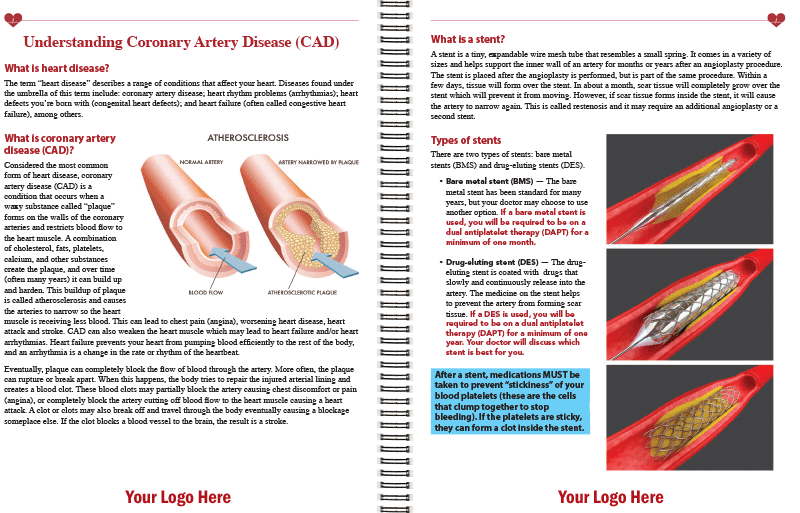 Atherosclerosis in men develops about 10 years earlier. In addition, before the age of 50, the risk of developing this disease in men is four times higher than, respectively, in women. When the threshold of 50 years of age is reached, the incidence in both sexes is equalized.
Atherosclerosis in men develops about 10 years earlier. In addition, before the age of 50, the risk of developing this disease in men is four times higher than, respectively, in women. When the threshold of 50 years of age is reached, the incidence in both sexes is equalized.
– Age . With age, the risk of developing the disease we are considering increases. Accordingly, the older the person, the greater this risk. And, of course, it is also impossible to influence this factor, because it is considered in this group of them.
– Genetic predisposition . This risk factor is also unchanged when considering atherosclerosis. Particularly susceptible to this disease are those patients whose closest relatives are diagnosed with one or another of its forms. Modifiable causes, in turn, are characterized by the fact that they can be influenced by the patient. This may include lifestyle changes and treatment. Among them are:
– Arterial hypertension . The peculiarity of the effect of hypertension is that against its background there is an increase in the intensity of impregnation of arterial walls with fats, which, in turn, is considered as the initial stage in the development of the main manifestation of atherosclerosis, an atherosclerotic plaque.
The peculiarity of the effect of hypertension is that against its background there is an increase in the intensity of impregnation of arterial walls with fats, which, in turn, is considered as the initial stage in the development of the main manifestation of atherosclerosis, an atherosclerotic plaque.
– Smoking . This factor is a serious help for the development of many diseases, and atherosclerosis is no exception. With prolonged smoking, the risk of developing the hypertension discussed above, as a predisposing factor in the development of atherosclerosis, increases, which already allows us to trace the chain of changes that are relevant in this case.
– Obesity . Obesity predisposes not only to the development of atherosclerosis itself, but also to one of the factors already listed by us, arterial hypertension, which in any case connects this factor with the disease we are considering. In addition, we note that obesity is also one of the main factors in the development of diabetes mellitus, which also plays an important role in considering the modifiable factors of interest to us.
– Diabetes mellitus . The relevance of this factor for patients significantly increases the risk of developing atherosclerosis (approximately 5-7 times). Such a high risk is explained by the relevance of metabolic disorders (in particular, this applies to fats), which provokes the development of atherosclerotic changes in the vessels.
– Hyperlipidemia (dyslipidemia) . This factor implies a violation in the metabolism of fats, which determines its no less significant role in terms of considering factors provoking atherosclerosis. It should be noted that all of the above factors are directly related to dyslipidemia, that is, with each of them, the problem of impaired fat metabolism is relevant.
– Power Features . The development of atherosclerosis in particular is affected by the presence of a significant amount of animal fats in the diet.
– Physical inactivity (sedentary lifestyle) . Due to reduced motor activity, as you might guess, the processes of carbohydrate and fat metabolism are disrupted, due to which, accordingly, the risk of developing these disorders and atherosclerosis in particular increases.
Due to reduced motor activity, as you might guess, the processes of carbohydrate and fat metabolism are disrupted, due to which, accordingly, the risk of developing these disorders and atherosclerosis in particular increases.
– Infections . The infectious nature of the development of atherosclerosis has been considered relatively recently. On the basis of ongoing studies, it was found that cytomegalovirus and chlamydial infections can be considered as two options representing this item in its connection with atherosclerosis.
Diagnosis
General examination reveals signs of atherosclerotic lesions of the vessels of internal organs: edema, trophic disorders, weight loss, multiple wen on the body, etc. Auscultation of the vessels of the heart and aorta reveals systolic murmurs. Changes in arterial pulsation, increased blood pressure, etc. testify to atherosclerosis.
X-ray aortography reveals signs of atherosclerosis of the aorta: its elongation, induration, calcification, expansion in the abdominal or thoracic regions, the presence of aneurysms.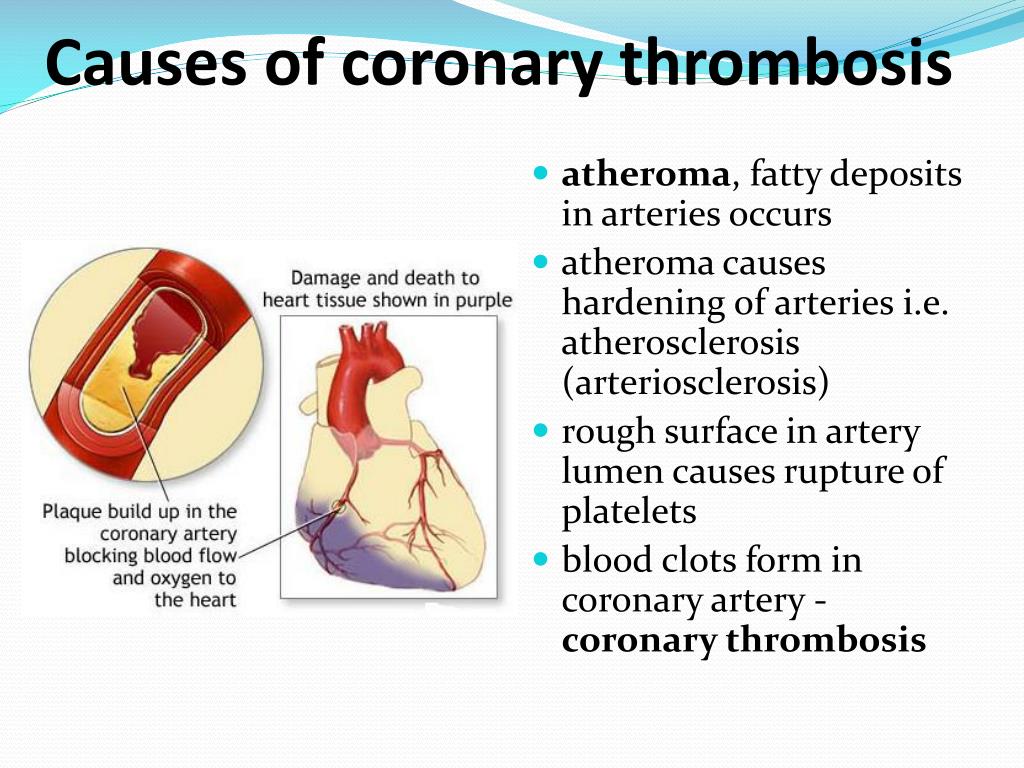 The state of the coronary arteries is determined by coronary angiography.
The state of the coronary arteries is determined by coronary angiography.
Blood flow disorders in other arteries are determined by angiography – contrast radiography of blood vessels. With atherosclerosis of the arteries of the lower extremities, according to angiography, their obliteration is recorded.
Ultrasonography of the renal vessels reveals atherosclerosis of the renal arteries and associated renal dysfunction.
Methods of ultrasound diagnostics of the arteries of the heart, lower extremities, aorta, carotid arteries register a decrease in the main blood flow through them, the presence of atheromatous plaques and blood clots in the lumen of the vessels.
Treatment
Very often the best and most effective treatment for atherosclerosis is prevention. It is enough to change your lifestyle to achieve an improvement in well-being: a healthy and balanced diet, exercise, and the absence of stressful situations. Also, non-drug methods of atherosclerosis treatment include such measures as: weight loss to the physiological norm; the use of a special diet with minimization of fatty and fried foods and an increase in the diet of vegetables, fruits and seafood; quitting smoking and drinking alcohol.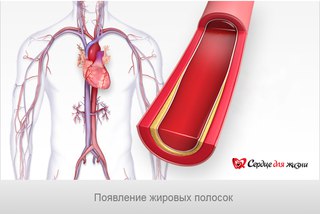

 But that doesn’t tell the whole story. Everyone also has ”good” cholesterol, or high-density lipoprotein (HDL), circulating in the blood. HDL is believed to remove some of the bad cholesterol from plaque in clogged arteries and transport it back to the liver, where it is eliminated.
But that doesn’t tell the whole story. Everyone also has ”good” cholesterol, or high-density lipoprotein (HDL), circulating in the blood. HDL is believed to remove some of the bad cholesterol from plaque in clogged arteries and transport it back to the liver, where it is eliminated.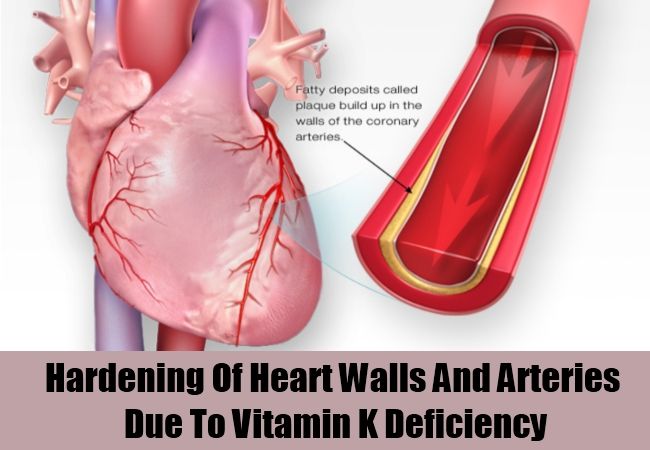 Knowing your family history is critical.
Knowing your family history is critical. The reduced blood flow can cause you to experience pain, numbness, or serious infection in your legs and feet.
The reduced blood flow can cause you to experience pain, numbness, or serious infection in your legs and feet.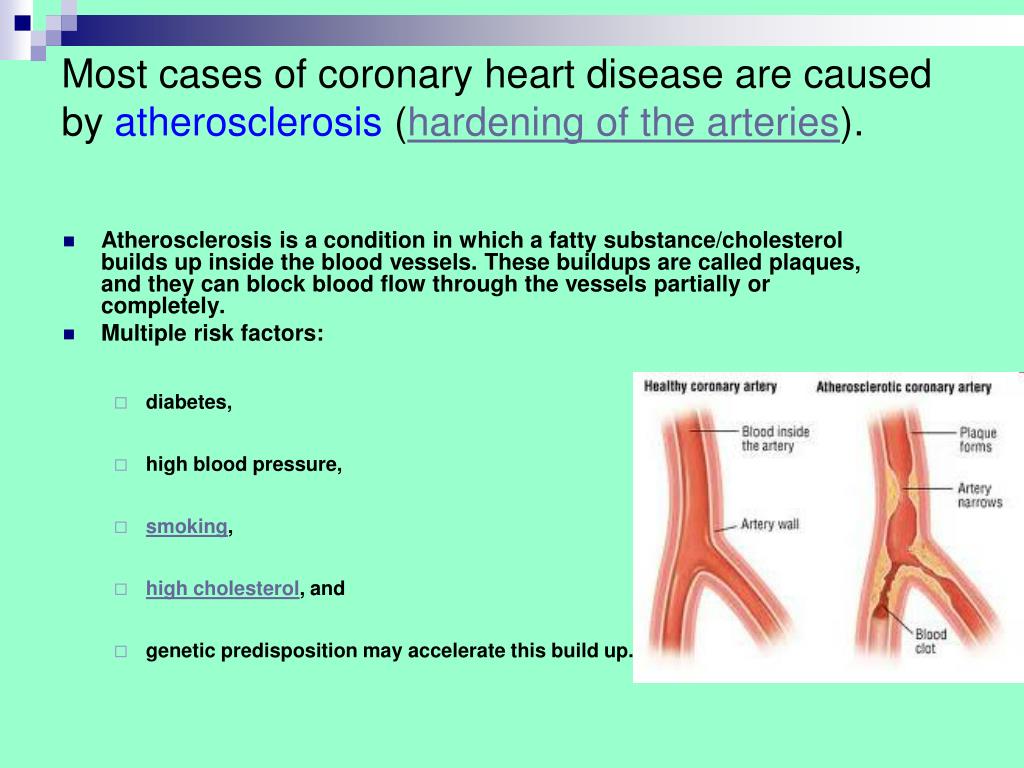




 Treatment of atherosclerosis in the elderly is often combined with the treatment of other acquired diseases, such as diabetes.
Treatment of atherosclerosis in the elderly is often combined with the treatment of other acquired diseases, such as diabetes.